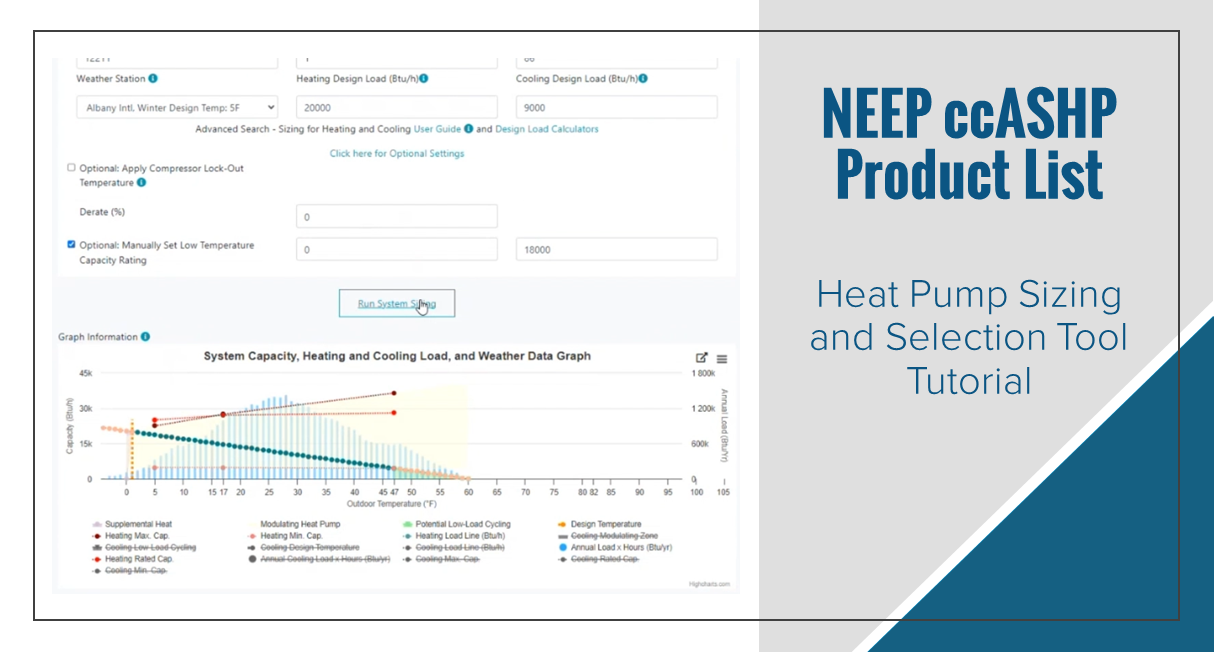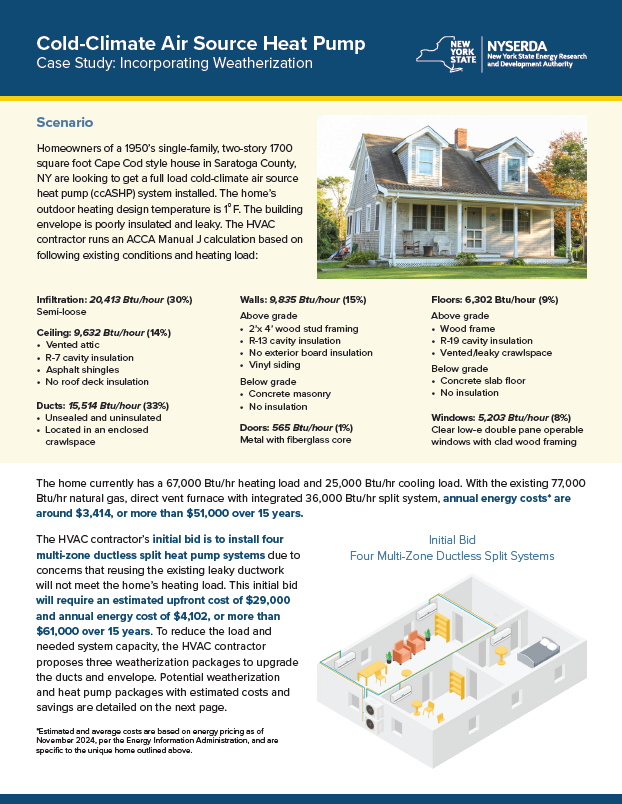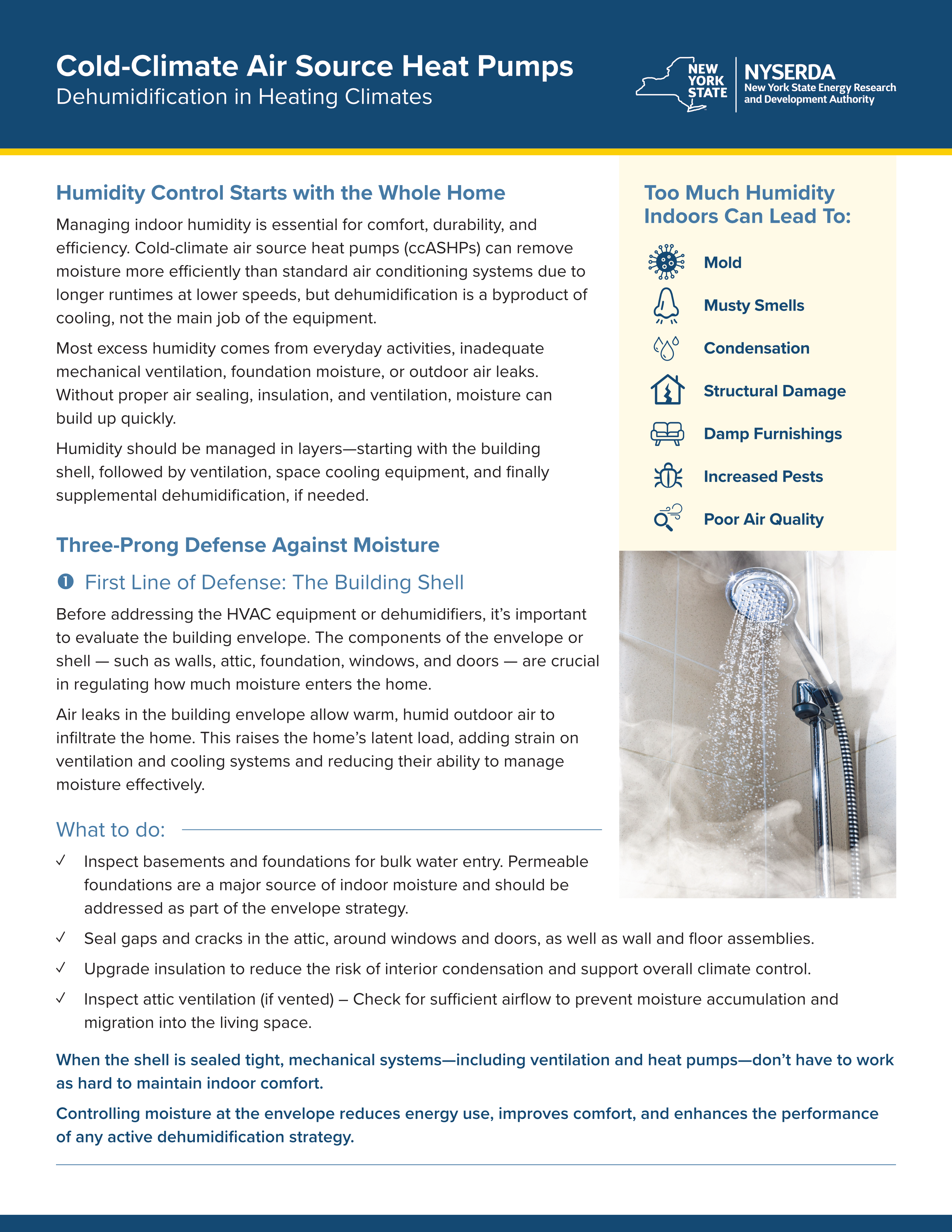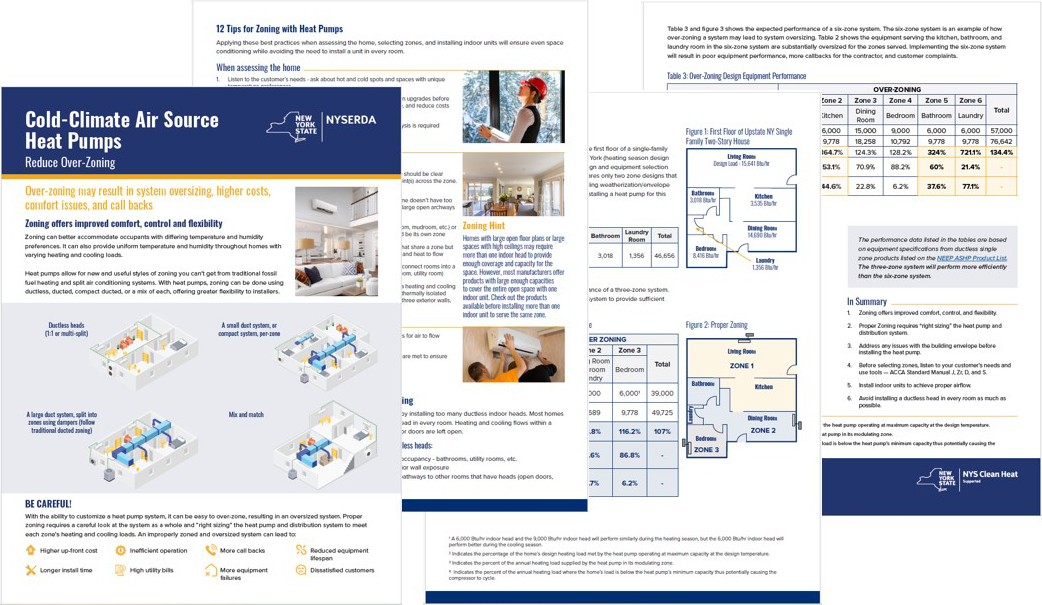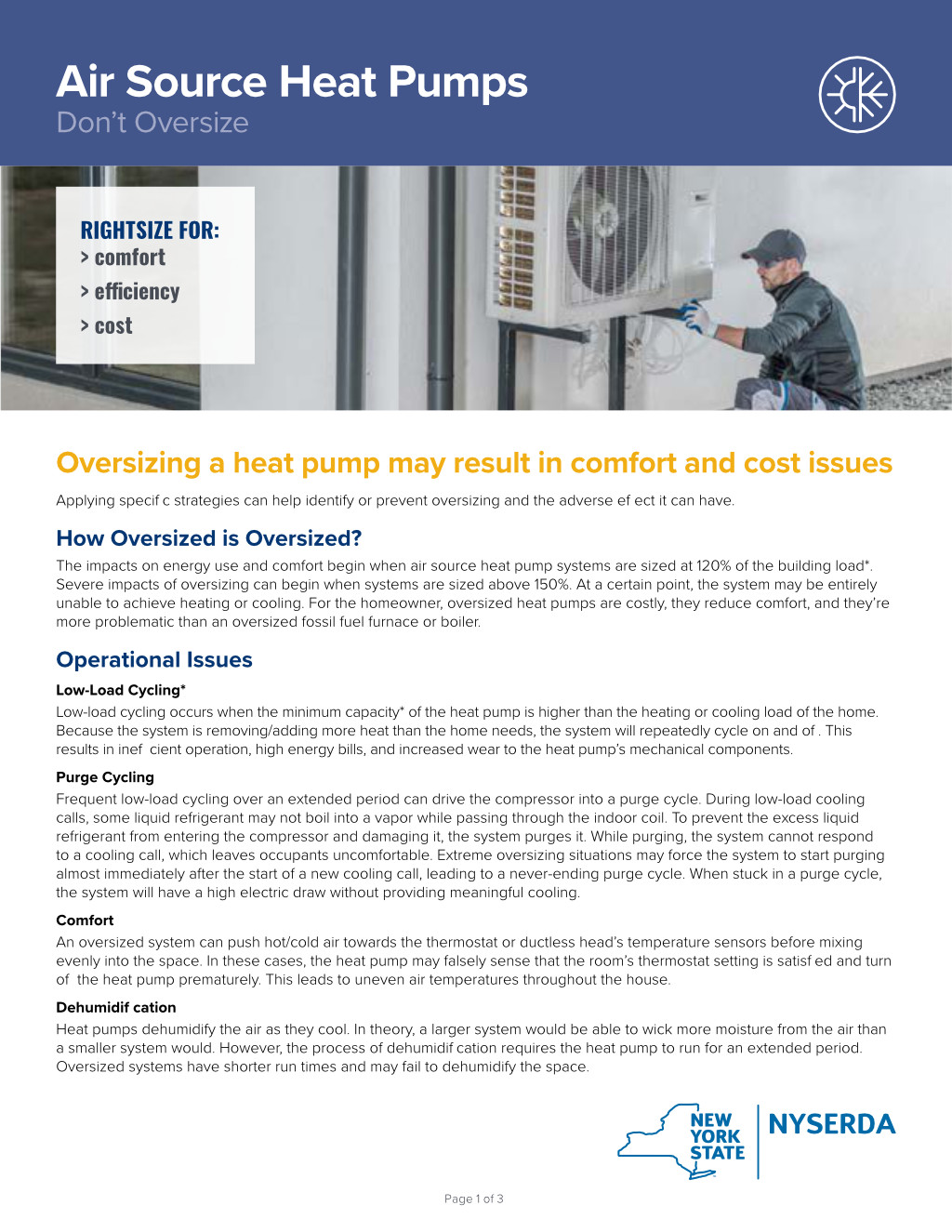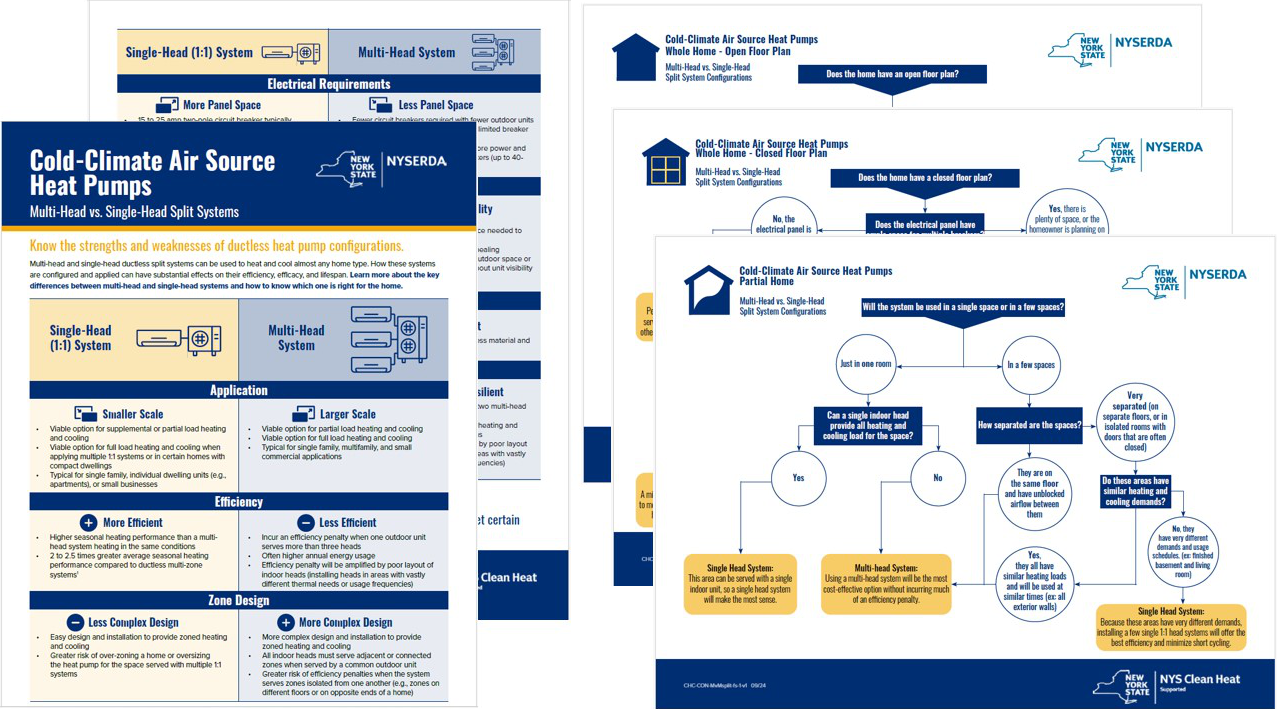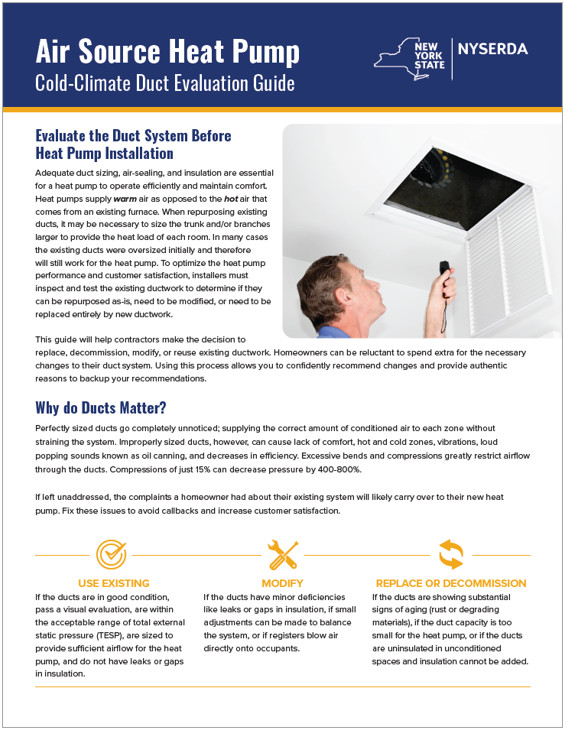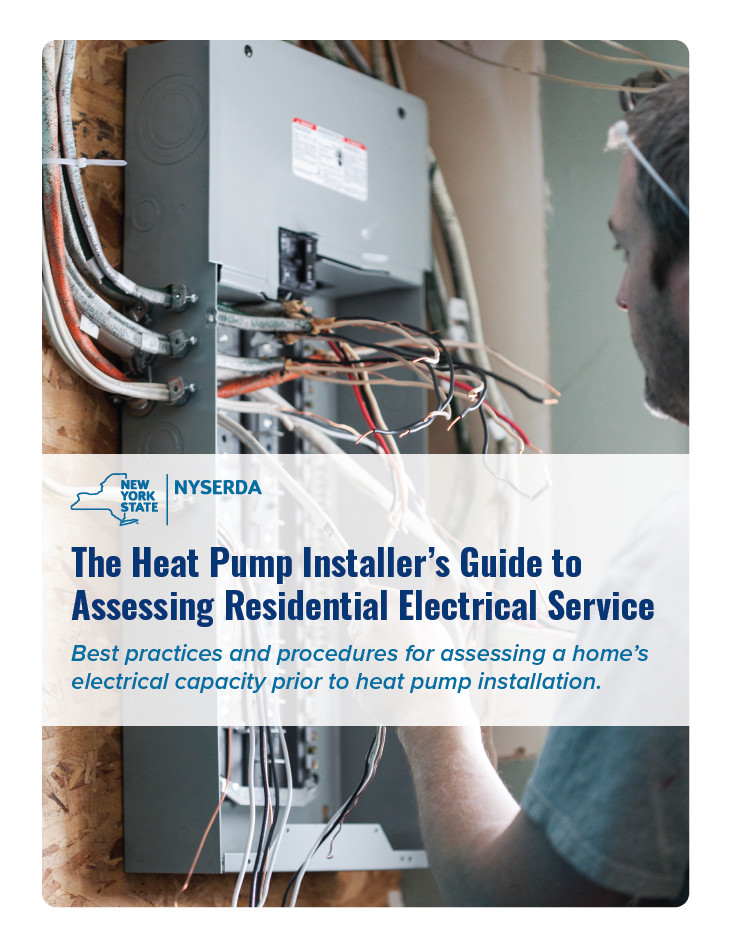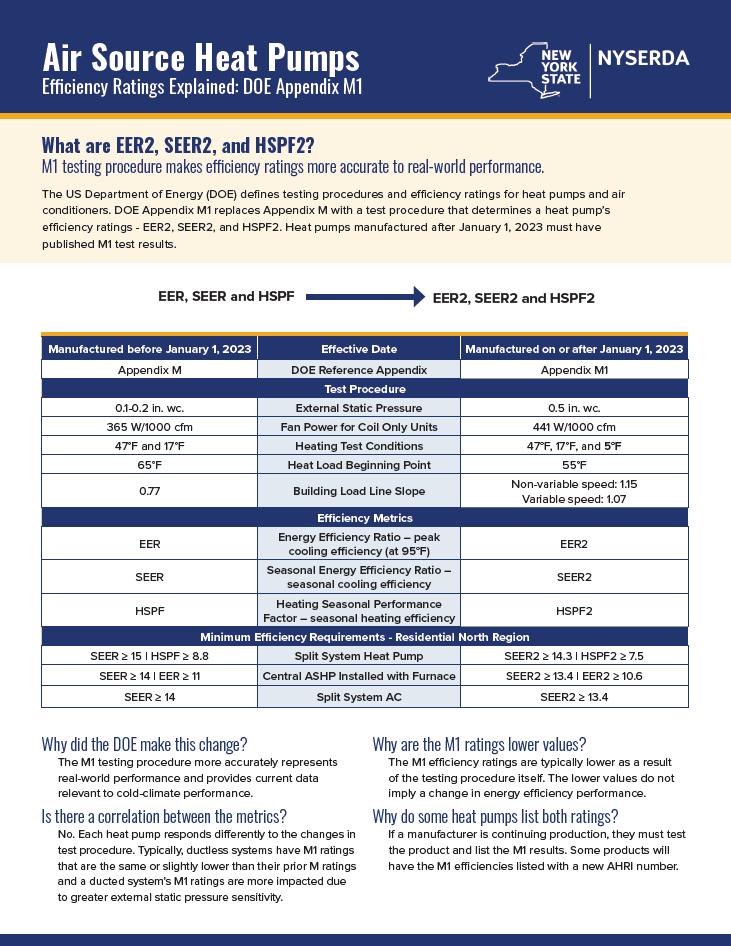Sizing & Design Materials
Expert heat pump sizing and design resources you can trust.
These resources help NYS Clean Heat Contractors select the right heat pump for the job and design the system for efficient operation and customer satisfaction.
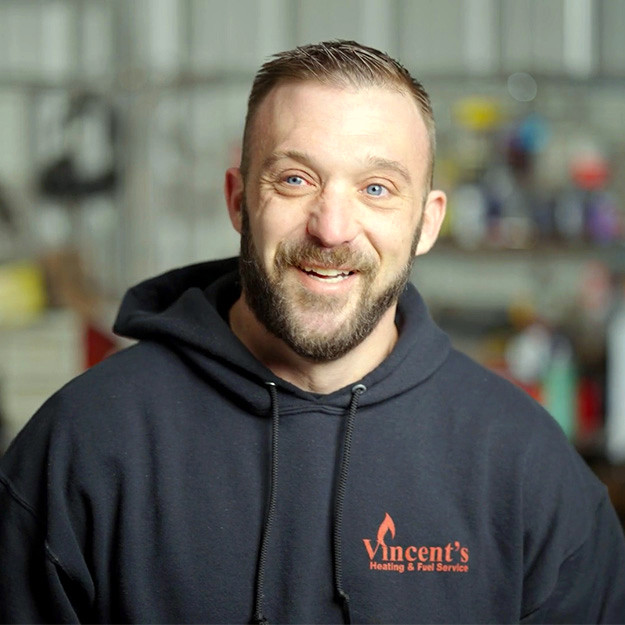
“We get into the software — the Manual J, the Manual S — do the heat load on the house, and that’s what’s going to give you the proper number for that home... It’s going to give you the correct number you need for that house so you’re not undersized — and really, it’s not good to be oversized either.”
— Kyle, Vincent’s Heating & Fuel Service
NEEP — Cold Climate Sizing Support Tools
Northeast Energy Efficiency Partnerships’ key tools for sizing and designing air source heat pumps in cold climates like New York State.
NEEP — Cold Climate Sizing Support Tools
The cold climate heat pump sizing support tools, which include a helpful tutorial video on how to use them, help users to select cold-climate air source heat pump (ccASHP) products that are sized to best match the peak and annual heating needs of a home or heating zone. The tools, functioning within the NEEP ccASHP Product List website, include a search function and a product-level analysis. The search function helps users compare multiple products based on the search criteria. The product view displays system and load-matching data, and provides a visual for how a specific heat pump’s capacity matches the heating load across the home’s winter temperatures.
NEEP — Sizing and Selecting Air Source Heat Pumps in Cold Climates
Selecting the right cold climate heat pump requires careful consideration of the heating load, the intended use of the system, and the configuration of the new unit. With so many heat pump configurations available, it can be easy to make mistakes. This guide provides an overview on sizing and selecting heat pumps that maximize performance, efficiency, and customer satisfaction.
Weatherizing First
Learn the positive impact of proper air sealing and insulating on heat pump installations.
Improving Installations by Weatherizing First
Nine out of ten homes in the U.S. are under-insulated, and air leakage can account for 25-40% of the energy used for heating and cooling in a typical home. Basic weatherization and building-envelope improvements, such as air-sealing and increased attic insulation, can reduce the design heating and cooling loads of a New York State home significantly. This often allows an installer to use a smaller heat pump with a simpler distribution system. This leads to improved customer comfort, lower installation and operating costs, and higher customer satisfaction with a heat pump system.
Dehumidification in Heating Climates
Managing indoor humidity is essential for comfort, durability, and efficiency.
Dehumidification in Heating Climates
Most excess humidity comes from everyday activities, inadequate mechanical ventilation, foundation moisture, or outdoor air leaks. Without proper air sealing, insulation, and ventilation, moisture can build up quickly.
Humidity should be managed in layers—starting with the building shell, followed by ventilation, space cooling equipment, and finally supplemental dehumidification, if needed.
Reduce Over-Zoning
This guide helps contractors understand how to match system zoning to a customer’s needs.
Reduce Over-Zoning
Over-zoning a heat pump system may result in system oversizing, higher costs, comfort issues, and call backs. Proper zoning can better accommodate occupants with different temperature and humidity preferences. It can also provide uniform temperature and humidity throughout homes with varying heating and cooling loads. Heat pumps allow for new and useful styles of zoning you can’t get from traditional fossil fuel heating and split air conditioning systems.
Don’t Oversize
Oversizing a heat pump system can lead to unintended consequences. Properly sizing a heat pump system to the heating load of the home leads to a happier customer.
Don’t Oversize
Oversizing a heat pump is more problematic than oversizing a fossil fuel furnace or boiler. The energy and comfort impacts of an oversized air-source heat pump can take effect beginning with systems sized at 120%, and severe impacts of oversizing can begin with systems sized above 150% of the building load. At a certain point, the system may be unable to achieve heating or cooling entirely. In cold-climates with humid summers a system that’s oversized for heating may be unable to functionally dehumidify the air which can lead to mildew, mold, and wood-rot in extreme cases. In all, oversized systems are costly to the homeowner and reduce comfort.
Multi-Head vs. Single Head Split System
Understand when, why, and how to install a multi-head or single-head heat pump system.
Multi-Head vs. Single-Head Split Systems
Multi-head and single-head ductless split systems can be used to heat and cool almost any home type. How these systems are configured and applied can have substantial effects on their efficiency, efficacy, and lifespan. This guide provides more insight into the key differences between multi-head and single-head systems and how to know which one is right for the home.
Duct Evaluation Guide
There are important considerations to make when sizing air ducts for a heat pump.
Duct Evaluation Guide
The Cold-Climate Duct Evaluation Guide explains why it is important to properly size ducts for air source heat pumps, how to assess existing ducts to determine if they should be reused, modified, replaced, or decommissioned, impacts on duct replacement costs, and best practices when assessing existing ducts. The guide also provides the National Comfort Institute’s (NCI) Standardized Duct Sizing Tables for easy of referencing.
Assessing Residential Electrical Service
This guide gives HVAC installers the tools they need to assess a home’s electrical system before engaging with an electrician or starting the heat pump installation process.
Installer’s Guide to Assessing Residential Electrical Service
Do You Have Enough Juice?
When installing a new heat pump system, the home must have sufficient electric system capacity to provide the heat pump’s power. Underserviced homes may require an amperage upgrade from the utility. In many cases the homeowner can avoid this cost by installing technology alternatives that reduce peak amperage, efficiently utilizing breaker space in the electric panel, adding subpanels, or some combination thereof. This moment of decision on how to adapt or update a home’s electrical capacity is a prime opportunity for heat pump contractors to discuss long-term plans with the homeowner and gain momentum toward full electrification, preventing homeowners from having to make additional expensive electrical changes down the line.
This guide will assist HVAC installers in assessing a home’s electrical system before engaging with an electrician or starting the heat pump installation process.
This guide includes steps to:
- Determine the home’s electrical service capacity
- Discuss long-term plans for the home
- Estimate existing and future peak electrical loads
- Provide options to install clean heat in electric-system-constrained homes
- Anticipate the electrical work
Heat Pump Home Runs
Learn from this series of winning heat pump design strategies by home type.
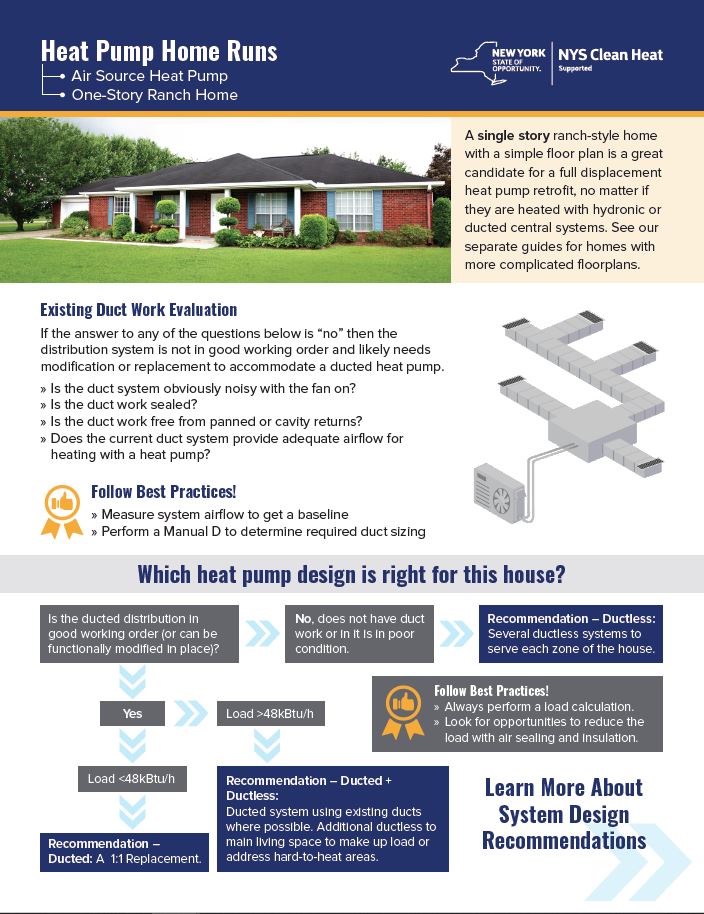
Heat Pump Home Runs
Heat Pump Home Runs is a set of winning design strategies for full displacement heat pump installations. Contractors can view heat pump design options for various common home types and be reminded of key technical considerations to review on each job.
Efficiency Ratings Explained – DOE Appendix M1
Understand the DOE’s new air source heat pump efficiency ratings and how they may impact a project’s eligibility for NYS Clean Heat incentives and available tax credits.
Air Source Heat Pump: Efficiency Ratings Explained – DOE Appendix M1
The Air Source Heat Pump: Efficiency Ratings Explained – DOE Appendix M1 sheet explains the new efficiency metrics (HSPF2, SEER2, and EER2), the new test procedure they came from, and how these changes impact eligibility for NYS Clean Heat utility incentives and 25C federal tax credits from the Inflation Reduction Act.
Find sizing and design training opportunities.
Clean Heat Connect hosts live and on-demand sizing and design classes from leaders in New York’s residential heat pump market.
Explore Other Top Resources
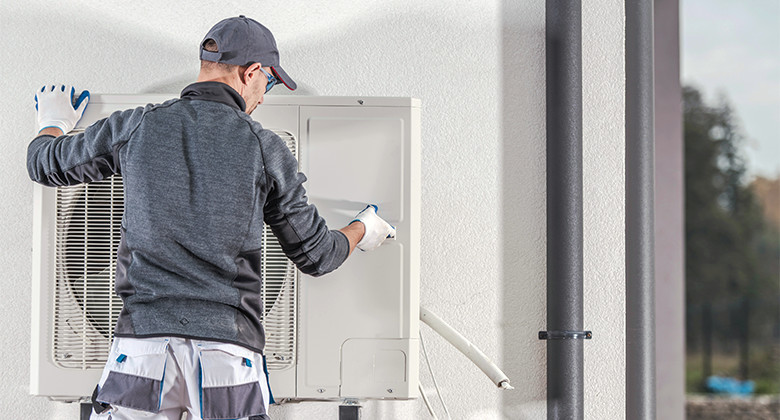
Installation Materials
Resources on flare fitting, refrigerant use, protection from electrical surges, commissioning, installing in cold climates, and more.

Sales & Marketing Materials
Industry tools for project pricing and available tax credits, along with resources for your customers designed to help close deals.
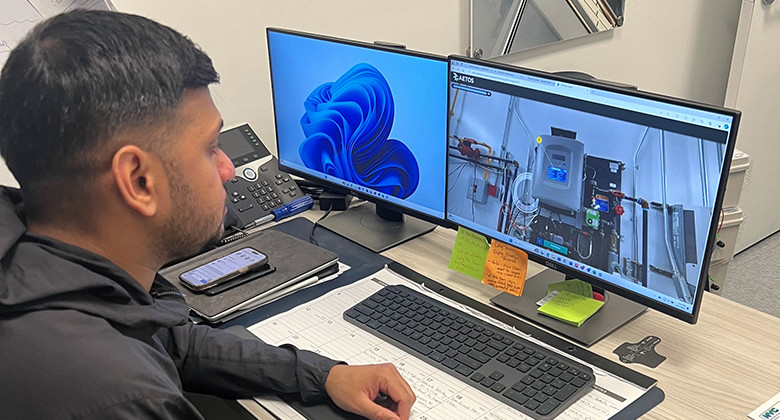
Clean Heat Training
These courses are designed to help contractors optimize their heat pump business within the NYS Clean Heat program opportunity.
